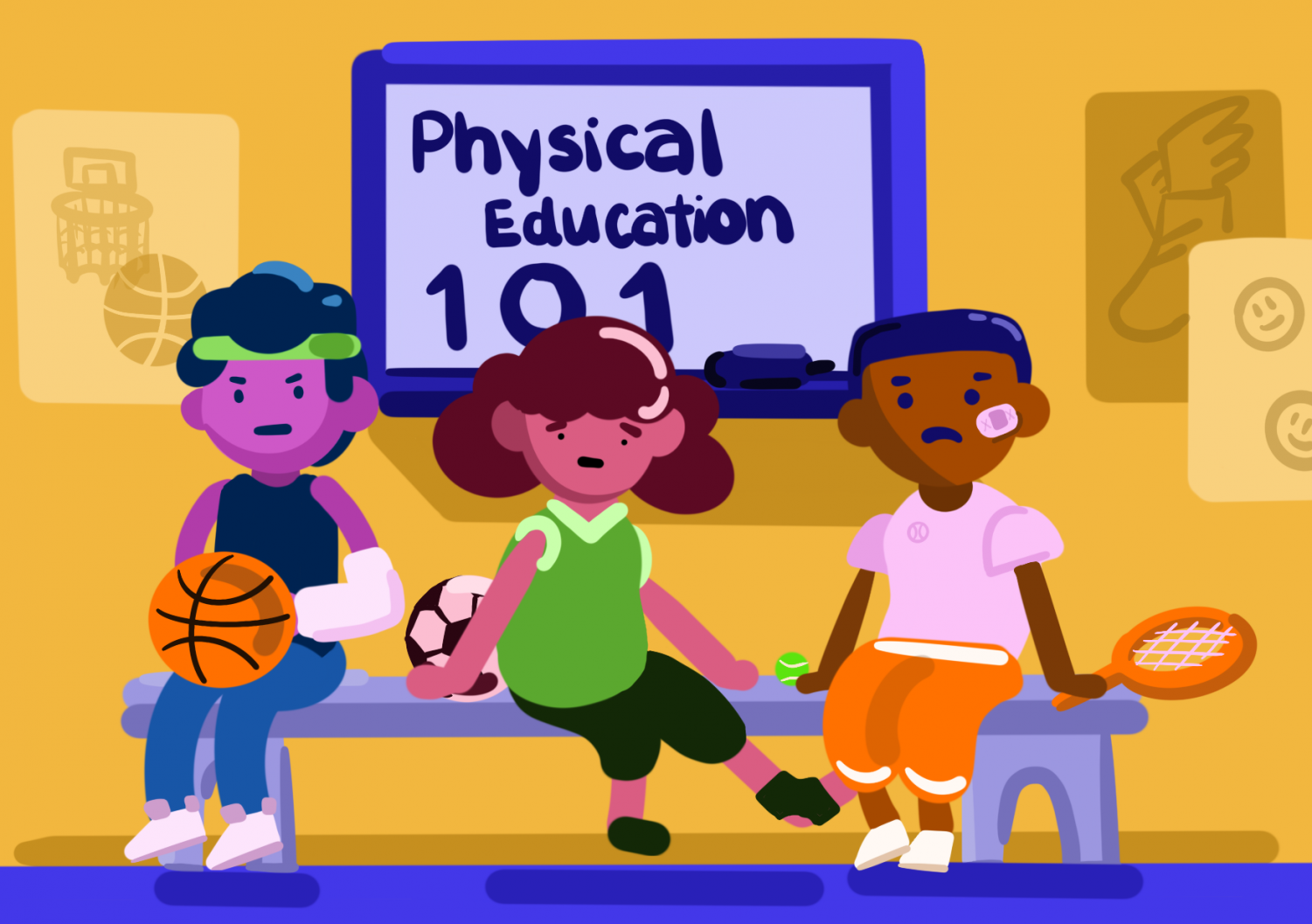
High school gym class: a graduation requirement, or as some student-athletes call it, “cruel and unusual punishment.” What could be so bad about a class that aims to “achieve proficient levels in health, safety, and physical education?” Perhaps it’s the mandatory participation in risky, inefficient, fruitless activities. Maybe it’s the fact that all students, regardless of whether they participate in several hours of sports every day, are compelled to participate in eight full semesters of gym class throughout their stay in high school, which equates to hundreds of hours spent doing unnecessary and purposeless activities. Or maybe it’s because athletes that are already prone to injury through the myriad high-intensity exercises they perform on a daily basis are further exposed with the chance of getting injured in gym class and thus taken out of play for the rest of the season. Call it what you want, but gym class is a clear impediment to students who are already physically active in school and becomes a detriment when it poses additional risks for those students. Therefore, student athletes should have the option to opt out of Physical Education classes.
Though well-intentioned, gym classes end up having adverse effects on an athlete’s physical and mental well-being. The nature of big gym classes leads to time wasted on taking attendance, deciding the day’s activity, and time-consuming explanations of basic sports knowledge. The result: most of the class time is not even dedicated towards the purpose of the class but rather on boring and futile instructions. An MSNBC investigation concluded that across the country, on average, students only spend 16 out of 45 minutes physically exercising. Students are aware of this harsh reality and that’s why the majority of their responses to a Cornell study claim that gym class is an “ineffective” use of school time. As a fellow student athlete, I can confidently say that the rigorous six-days-a-week training schedule already provides us with sufficient exercise time for the week. Furthermore, student athletes have an especially packed schedule as we try to juggle academic rigor with our passion for sports. This results in extreme pressure mounting on our shoulders. The overbearing schedule causes the majority of high school athletes to suffer from mild or severe forms of depression and anxiety. Instead of a class where we idly sit on the gymnasium floor waiting for the class activity to commence, student-athletes could instead stand to benefit from the freedom of an extra study period. Student-athletes could productively use this time for schoolwork, stretching, or meditation. All of these activities would be undoubtedly more beneficial for the mental and physical health of the student athlete for whom gym class is a redundancy.
Unfortunately gym class is not only ineffective but, as research suggests, creates more harm than good. When students participate in activities like basketball or football during gym class, injuries are bound to happen. In some cases, students may throw caution to the wind and play too physically, especially if they are experienced athletes themselves. Other times students participate in activities without the proper equipment such as helmets or shinguards. Regardless of which factor you look at, there’s no denying the fact that gym poses an additional risk of hurting student athletes, which can have drastic consequences on those athletes’ performance in the sports they love. In fact, injuries are now more common inside school gymnasium than during after-school activities, which means more student athletes are at risk of being crippled or injured for the redundant physical activity they perform inside of school than outside. And it doesn’t take much for a teenage athlete who already bears the strain of hours of practice every day to be taken out for the rest of the season with one careless mistake. A sprained ankle could mean the end of what would have been a spectacular track and field season. It makes very little sense for students to put their athletic health on the line in activities as frivolous as physical education when the real physical application waiting for them at the end of the day requires them to be free of injury.
If gym class doesn’t offer any evident benefits for student-athletes and in turn increases the risk for injuries, does it deliver on its promise to promote health and physical education? I think we can all agree that it doesn’t. Let’s give student athletes the option to shine on the court and the fields and stay clear of gym class.




